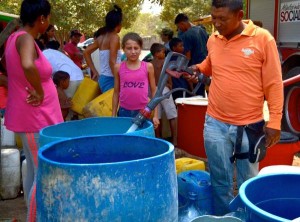By Danya Hernandez
Borderzine
EL PASO — For three years a woman roamed the border region with an infectious disease, not knowing her health kept deteriorating and that she was endangering those closest to her.
This is the story of Rachel Orduño, a social work graduate student at the University of Texas at El Paso, who in 2003 began having a recurring cough. Doctors of both sides of the El Paso-Cd. Juarez border region diagnosed and treated her for everything from bronchitis, pneumonia, to the common cold.
“I began with the most common symptoms. Continuous cough, weight loss due to lack of appetite, sweating at night and then I begin having trouble breathing,” Orduño said.
It took doctors three years to find the correct diagnosis, Tuberculosis (TB). A disease that most people disregard as “a thing of the past,” but which today affects one third of the world’s population.

“One third of the world population is living with the micro-bacterium, and that micro-bacterium is Latent, it’s dormant. And thank God it’s dormant, we don’t want it to be awaken,” Dr. Eva Moya, assistant professor at the University of Texas at El Paso who has been involved with Tuberculosis research and advocacy since 2005, said.
In 2010 there were 8.8 million reported TB cases worldwide of which only 5.7 million received treatment. As a result 1.4 million people died from TB in 2010, a disease that has been curable for more than 50 years.
“There are 250,000 kids that die every year from Tuberculosis, without a reason, having a cure,” Orduño said. “That is one of my motivations and the reason why I became involved in advocating.”
In the United States there were 11,182 reported TB cases in 2010, according to the Center for Disease Control and Prevention. The number of TB deaths in 2010 has not been reported by the CDC but in 2009 there were 547 reported deaths. That can be seen as 547 too many, taking into consideration that the average treatment cost per person is $13,000 for six to nine months of care according to the National Institutes of Health (NIH).
Lack of treatment or failure to continue treatment allows the disease to spread and become stronger. This is called Multi Drug Resistant or MDR TB, which the most dangerous strand but curable with a lengthier and more expensive treatment.
“With Multi Drug Resistance the treatment can be longer than 18 to 24 months,” Lupe Gonzalez, binational TB project manager with the Texas Department of State Health Services, said.
In 2010 there were 598 cases in the U.S. resistant to at least one of the four drugs used as TB treatment and 88 cases resistant to at least two drugs, according to the CDC.
Here in the border region MDR can be considered even more dangerous because those who don’t complete their treatment might cross the border and lose contact with their doctor. A person with MDR TB can infect those closest to them with the same MDR stand of the infection.
“A lot of the patients, especially patients that start expressing side effects of the medication, stop taking the medication because they start feeling ill,” Gonzalez explained. “Then we restart them two or three weeks later and the start and restart and restart of the medication is what builds up the resistance.”
Tuberculosis is spread through the air only. When a person with TB coughs, sneezes, speaks or sings the bacteria particles are left in the air. All it takes is for a nearby person to breath in the particles to become infected.
“Specially with Tuberculosis, anyone that breaths is at risk,” Orduño said.
In Orduño’s case doctors believe she had become infected when…
Finish reading Tuberculosis cases are more plentiful in states along the U.S.-México border





